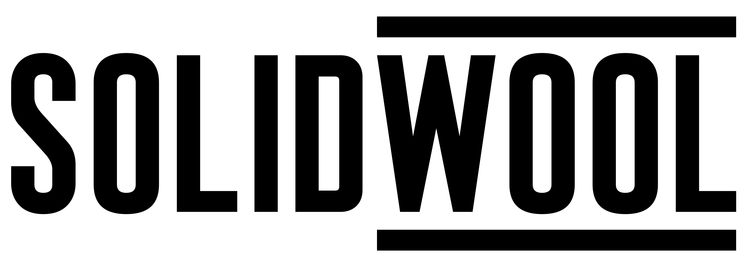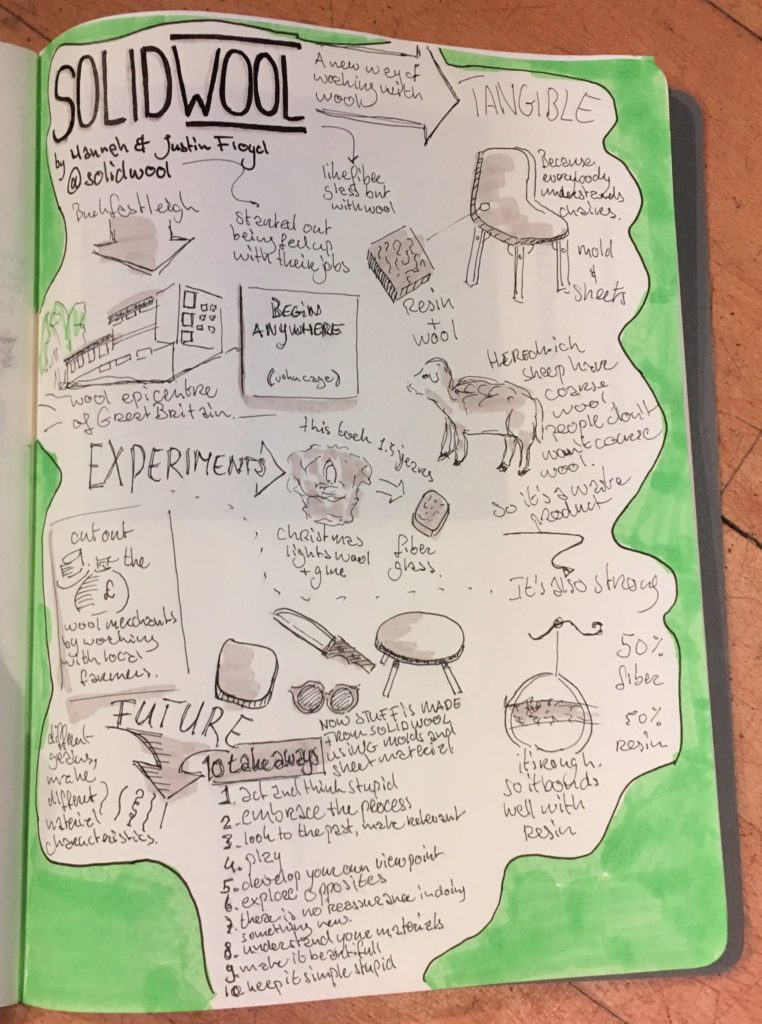Hannah and Justin Floyd had an idea. What if they could find a new way of working with wool and bring something back to their small market town of Buckfastleigh, England, a once thriving part of the woollen industry?
They learnt that the coarse wool from hill-farmed, upland sheep had dramatically lost its value in recent years. So they started to play. To turn the way wool is worked on its head. The end result is Solidwool — a strong, beautiful and unique composite material. Think fibreglass, but with wool.

They present their timeline and how they took the slow and small steps to leave their day jobs to work full-time on Solidwool. To make their product feasible for the long-term, they needed to start at the start and understand the farmers’ needs along with the whole supply chain. Beginning with the sheep, through to its material properties, to the finished products and everything in between.
They know better than anyone else, literally down to the micron scale about wool. That deep understanding is what they talked about in relation to knowing your material and its affordances.
Along the way they learnt a lot about the process, themselves and how to make mistakes. They gave use ten tips that apply to everyone in their endeavours.

Because…
Hannah and Justin were on our radar because of their Solidwool product. As Justin says in the presentation, they took something that is normally soft and experimented with making it hard. This reverse thinking is why Solidwool were invited to come present.
Iceland has a large sheep population. Wool and wooden products are certainly apart of Icelandic life. Their industry knowledge would resonate with our audience on multiple levels.
Since this was the first talk of our first conference, we also wanted to ground things in both a physical material, but also through the lens of someone who has done a very deep inspection of the material, in this case wool, and experimented and tried new approaches not attempted before.
Solidwool ➞ Web
The Web is something which is relatively new to us. In the larger spectrum of human existence, the Internet is a mere blip. We focus on what the Web does best and try to improve it by eeking out performance gains – making things faster, smaller, more immersive. What if we took the other approach? With things that we see as ‘soft’, what could we do with them if they were ‘hard’? What would a Web that’s been flipped on its head look like? What happens when all the pros become cons and all the cons become pros?
We’re only in the infancy of the Web. There is so much to explore in the opposite vector of where we are currently heading. We’ve seen some experimentation of this. Sites that archive data for ever compared to posts that expire after they’ve been viewed. Sites that consume and regurgitate millions of posts a minute compared to group chats that only allow you to post once a minute.
Doing the exact opposite of what is expected makes for a unique product. How can we do more of this with the Web?
Justin and Hannah also looked at the local history of their town Buckfastleigh and how it once was the wool powerhouse of Britain. When they decided to start working with wool neither had any background in it. How could they compete? The advice was todo something no one has done before with wool. If no one else is the expert, then you don’t have any competition.
On the Web, there are very few people with years of experience with the hottest newest technologies, simply because the technologies haven’t existed that long. This gives everyone an even footing if you want to jump in on something new, but it also means that you can ask ‘stupid’ questions and look at what already exists in completely different ways and try to do something new with it that no one has never done before.
Back in 02005, Jessie James Garrett created AJAX. This was built on existing technologies, but not in the way that he had envisioned. He took something, flipped it on its head and created something entirely new. Now, this is a core part of how we experience the Web.
Two generations ago, the wool from a farmers sheep paid for the rent on two farms. Today a farmer is lucky to get £200 from their herd. For some of the lower grade sheep, it costs more to shear them than the wool is worth.
Right now we’re riding high on the wave of technology. People who can code, design and build websites are in high demand and can demand a high price. If history is anything to go by that won’t always be the case. How can we prepare for a day when it costs us as developers more to setup, build, host and manage a website than we get paid? It is a crazy idea, but these farmers are finding ways.
You can view all the video recordings and subscribe to the Material podcast on the Material Archive site.